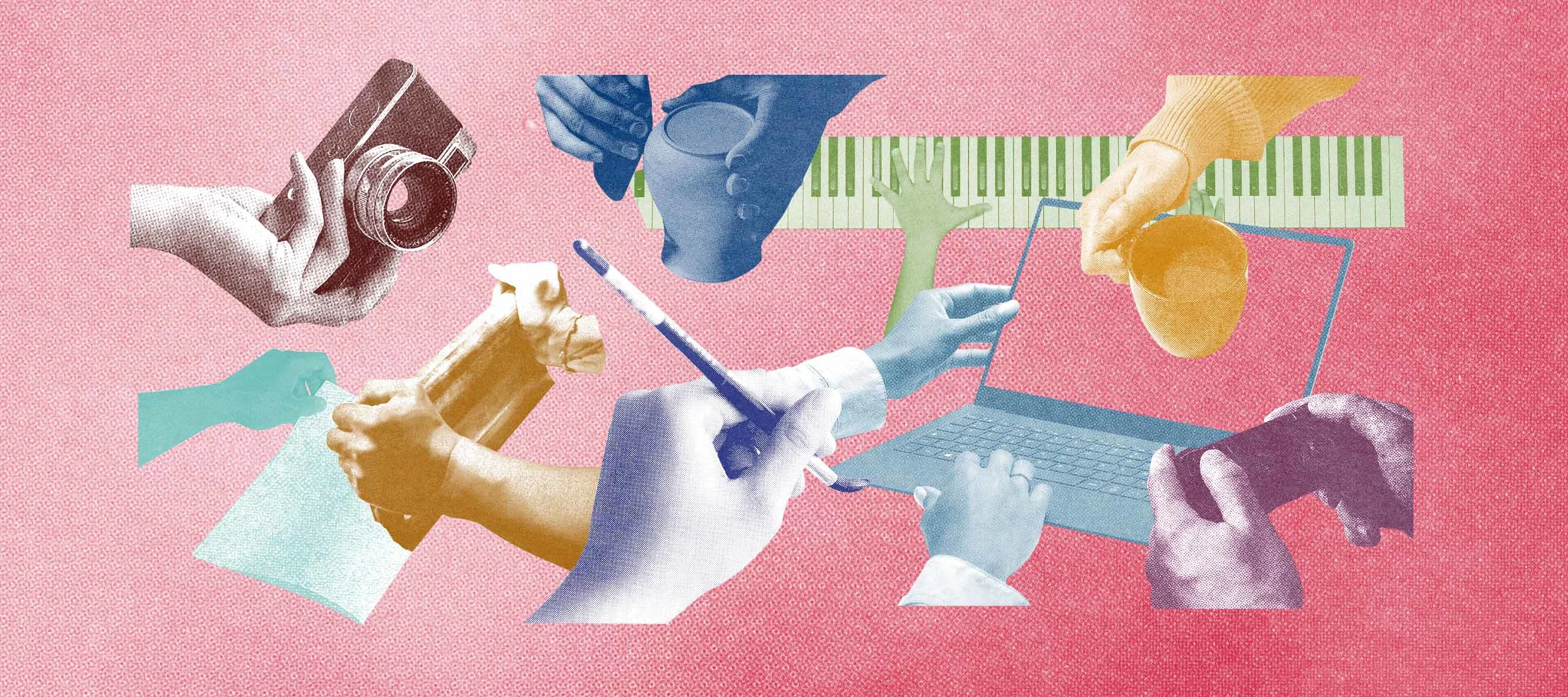5 Strategies for Finding and Connecting With Your Community
- 14 June 2022
- ByAnna Brones
- 7 min read

Humanity is driven by connections. Our communities are what inspire us, what educate us, what sustain us. We need each other. As artists we know the same is true for our creative work. Art is our vehicle for connecting with people.
An essential part of running an independent creative business therefore requires that we find, cultivate, and connect with our community. We need our people. But how do we find them and how do we connect with them? We talked to two Big Cartel users to learn some of their lessons centred around building and connecting with their communities.
It’s Not Just About Customers
As business owners, we need customers. But running an independent creative business is often about something a little deeper. “This sounds dramatic, but I wouldn't be a self-employed artist without my community,” says illustrator and lettering artist Ann Chen. “I'm constantly amazed by my community's generosity to me. My followers helped me fund a Kickstarter for my first few products, we've done t-shirt crowdfunding, and I've landed client work due to people sharing my art. I'm grateful to have a community who are excited to see me try new things and are here for me even when I fail or make mistakes.”
Understanding that your community is not just there to buy things from you can help you develop more ways to connect with them that aren’t solely focused on marketing your product. Consider what might be of interest to them about your process, the knowledge that you have to share, and the issues that are important to you.
As Chen illustrates, we don’t run our businesses in a vacuum—it’s important to know when and how to ask for help. Part of building and cultivating a community is knowing that it’s there to support you, and that you can do just that. Don’t be afraid of reaching out when you need something.
Figure Out What Works For You
In the digital age, of course, even if we attend in-person shows or have brick and mortar businesses, a lot of community-building takes place online and in social media. It can sometimes feel difficult to know how to cultivate genuine connections on platforms that are designed for clicking and scrolling, and while there are general strategies, there’s no one-size-fits-all approach.
The artist behind Erin Glassworks felt like it took a bit of trial and error to feel like she started to get the hang of social media and what kind of content would work in her niche and for her primary audience. But that initial work has paid off. “I show up on my page in a genuine way, and I also try to keep it fun and don’t take myself too seriously,” says Erin. Her own learning curve with social media even drove her to write a guide for fellow small business owners. “There are a lot of ways to be successful with your social media and brand, but I wanted to have fun with it. I have created an audience on my page that is there for a good running joke, which honestly makes it more fun for me.”
Make work that you love and share it, and do it in a way that feels true to who you are as an individual. As Erin points out, “being able to make people laugh or feel a part of something is a joy for me, as well as creating fun games and opportunities to make people feel included in the process of creating.”
Base Your Strategy on Reciprocity
Building a community is not a one-way street. Doing so requires an exchange, one that often goes above and beyond just promoting your products, and it’s important to cultivate a sense of participation. “To reciprocate their support, it's crucial to provide value to my community by being helpful and sharing my resources and experiences,” says Chen. “There's a lot of glamorization about being a self-employed creative, but the truth is none of us have it figured out. I'm transparent about my struggles with owning a business and being a freelance artist. Sharing the hard stuff can be incredibly cathartic for myself and my followers dealing with similar issues. A big part of the internet is people trying to find people we can relate to and help each other through difficult times.”
When we find people that we can relate to, that can often strengthen our understanding and belief in ourselves. But if we’re connecting with fellow business owners, there’s always the risk that feelings of competition can sneak in. As Erin notes, consider where those feelings are coming from and what you can do about it. “When the water rises, all the ships rise with it. In my opinion, there is more than enough room for everyone to be successful and focusing on building and supporting community has yielded me a far more rewarding experience with social media than I think I would have had otherwise,” says Erin. “If you feel like you are competing with other people, I think you haven’t found your niche yet and your work/product needs to be refined to reflect your unique brand.”
Be a Good Communicator
Keeping a community thriving requires communication. Depending on the scale and size of your business, you may not be able to get to all queries, but it’s important that people know you are listening and responding. “I let my community know I'm always open to feedback about what products and resources they'd like to see from me,” says Chen. “I can't always respond right away, but I answer every comment to let people know I read their messages and appreciate their support. I also help my audience by sharing tips and advice on navigating the world of freelancing and owning a shop online.”
Go Beyond The Digital Community
Much of our lives are spent in the digital space, but be sure to invest in some of those community relationships in person. Your online community can often lead to powerful real-life connections. “The genuine friendships I have made through social media has been the biggest highlight for me,” says Erin. “I was able to go to the Glass Craft and Bead Expo in Vegas last month and got to meet up with a core group of stained glass artists that I have been friends with [online] for a couple years at this point. Meeting in person really solidified for me that the interactions we have online can be real and genuine friendships.”
14 June 2022
Words by:Anna Brones
- Share

